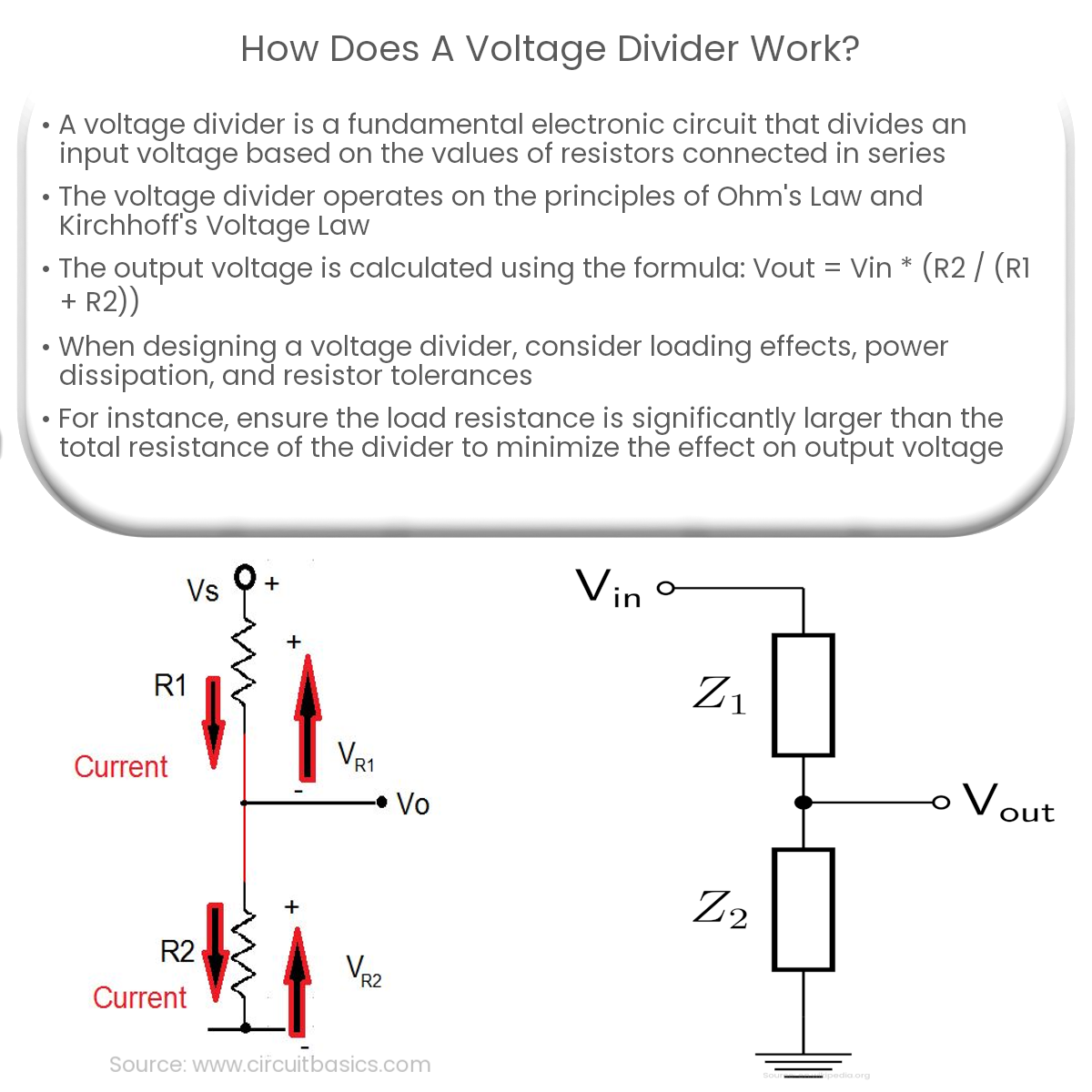A voltage divider works by dividing an input voltage based on resistor values in series, using Ohm’s Law and Kirchhoff’s Voltage Law principles.
How Does a Voltage Divider Work?
A voltage divider is a fundamental electronic circuit that proportionally divides an input voltage based on the values of resistors connected in series. It is a passive linear circuit that uses two or more resistors to produce an output voltage that is a fraction of the input voltage.
Voltage Divider Principle
The voltage divider works based on Ohm’s Law and Kirchhoff’s Voltage Law. Ohm’s Law states that the voltage across a resistor is proportional to the current flowing through it and its resistance:
V = I * R
Kirchhoff’s Voltage Law states that the sum of voltages around a closed loop is equal to zero:
Vin – VR1 – VR2 = 0
Voltage Divider Equation
In a basic voltage divider circuit, two resistors, R1 and R2, are connected in series between the input voltage (Vin) and ground. The output voltage (Vout) is taken across R2, which is connected to ground. The voltage divider equation is derived from Ohm’s Law and Kirchhoff’s Voltage Law:
Vout = Vin * (R2 / (R1 + R2))
Example of a Voltage Divider
Consider a simple voltage divider circuit with an input voltage of 9V, R1 equal to 2 kΩ, and R2 equal to 3 kΩ. Applying the voltage divider equation:
Vout = 9V * (3 kΩ / (2 kΩ + 3 kΩ))
Vout = 9V * (3/5) = 5.4V
The output voltage of this voltage divider circuit is 5.4V, which is a fraction of the input voltage.
Important Considerations
While designing and using voltage dividers, keep the following considerations in mind:
- Loading Effects: The output voltage may be affected by the load connected to the voltage divider. Ensure that the load resistance is significantly larger than the total resistance of the divider to minimize this effect.
- Power Dissipation: Resistors in a voltage divider dissipate power as heat. Choose appropriate resistors with sufficient power ratings to handle the power dissipation and prevent overheating.
- Accuracy: The output voltage depends on the tolerance of the resistors. Use precision resistors with lower tolerances for more accurate voltage divisions.
In conclusion, a voltage divider works by using the principles of Ohm’s Law and Kirchhoff’s Voltage Law to proportionally divide an input voltage based on the values of resistors connected in series. It is essential to consider loading effects, power dissipation, and resistor tolerances when designing and implementing voltage divider circuits.


